Key takeaways:
- Goal-oriented assessments provide clarity and direction, helping educators and learners focus on specific skills and celebrate progress.
- Assessments serve as valuable feedback tools, empowering learners to take ownership of their learning and boosting their confidence through self-reflection.
- Diverse assessment formats, including oral presentations and creative projects, can enhance engagement and accommodate varied learning styles, particularly for students with dyslexia.
- Creating a supportive environment and involving students in the assessment design process fosters a sense of agency, leading to more meaningful and relevant assessments.
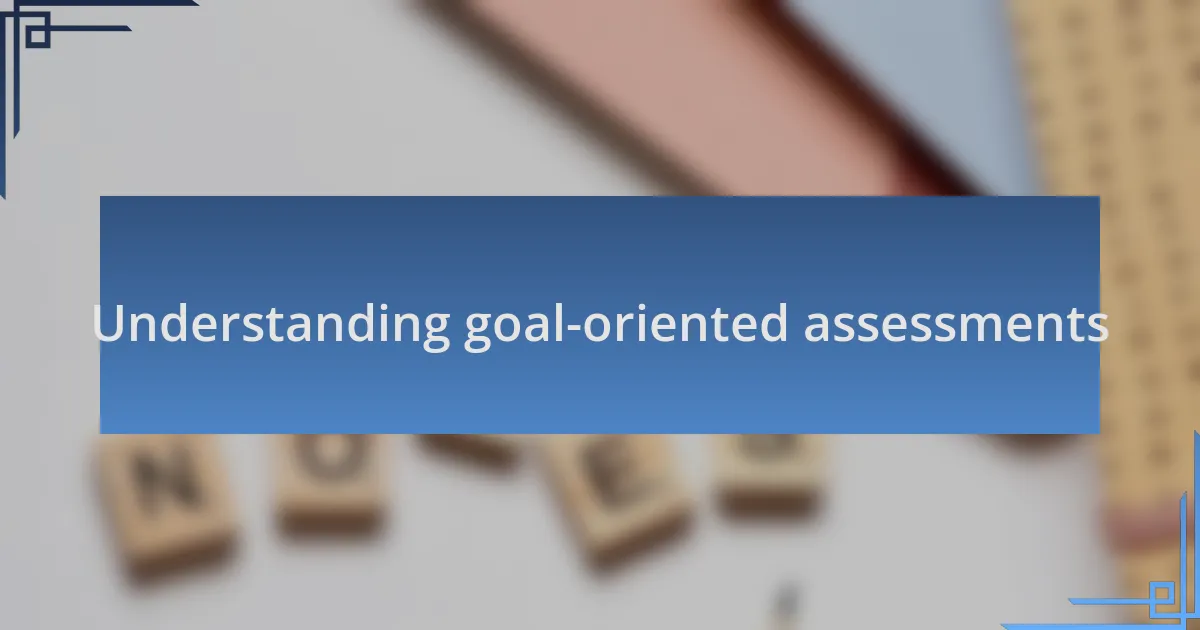
Understanding goal-oriented assessments
Goal-oriented assessments are designed to measure a learner’s progress against specific, clearly defined objectives. I remember when I first encountered these assessments in my training sessions; it was like a light bulb went off. They help pinpoint not just what a learner struggles with, but also celebrate their achievements as they move towards their goals.
In my experience, these assessments create a roadmap for both educators and learners, guiding us on which skills need more attention. Have you ever felt overwhelmed by the multitude of skills needed for reading or writing? Goal-oriented assessments break this down and provide clarity, helping to focus our efforts on what truly matters.
Understanding these assessments involves seeing them as more than just tests; they are tools for growth. The satisfaction I felt when I saw a student improve in targeted areas reinforced the power of setting clear goals. It’s truly inspiring to witness someone gain confidence in their abilities as they meet each milestone on their journey.
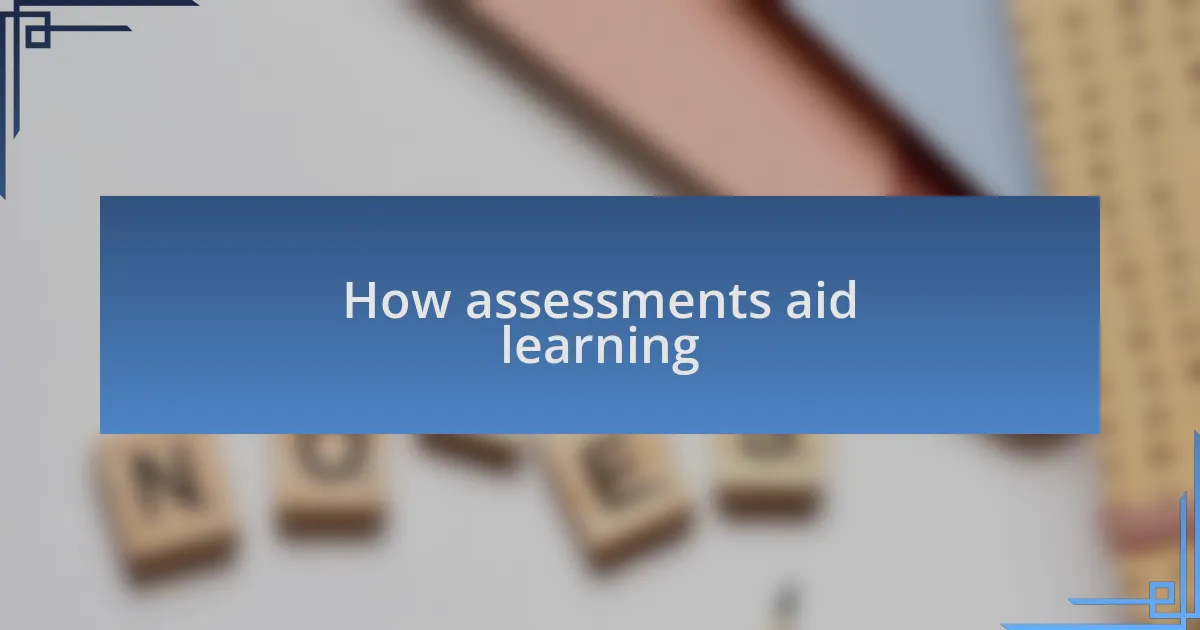
How assessments aid learning
Assessments play a crucial role in highlighting areas where a learner excels and where they may need additional support. I recall working with a student who struggled with phonemic awareness. Through our assessments, we discovered that while they found blending sounds challenging, they had a remarkable ability to decode words when given the right strategies. This revelation not only boosted their confidence but also allowed us to tailor our lessons more effectively to harness their strengths.
When I think about the effect of assessments on learning, it’s clear they serve as a mirror reflecting a learner’s journey. For instance, after implementing specific assessments, I noticed a student who once felt defeated began to thrive. Each small success was validated by the data we gathered. Isn’t it incredible how knowing exactly where someone stands can transform their experience from one of uncertainty to empowerment?
These assessments don’t just guide instruction; they provide invaluable feedback that can motivate learners to take charge of their progress. I remember a moment when a student looked at their assessment results and said, “I can see how far I’ve come.” That realization is empowering. It fosters a sense of ownership over their learning journey, making each assessment a building block towards greater self-esteem and academic success.
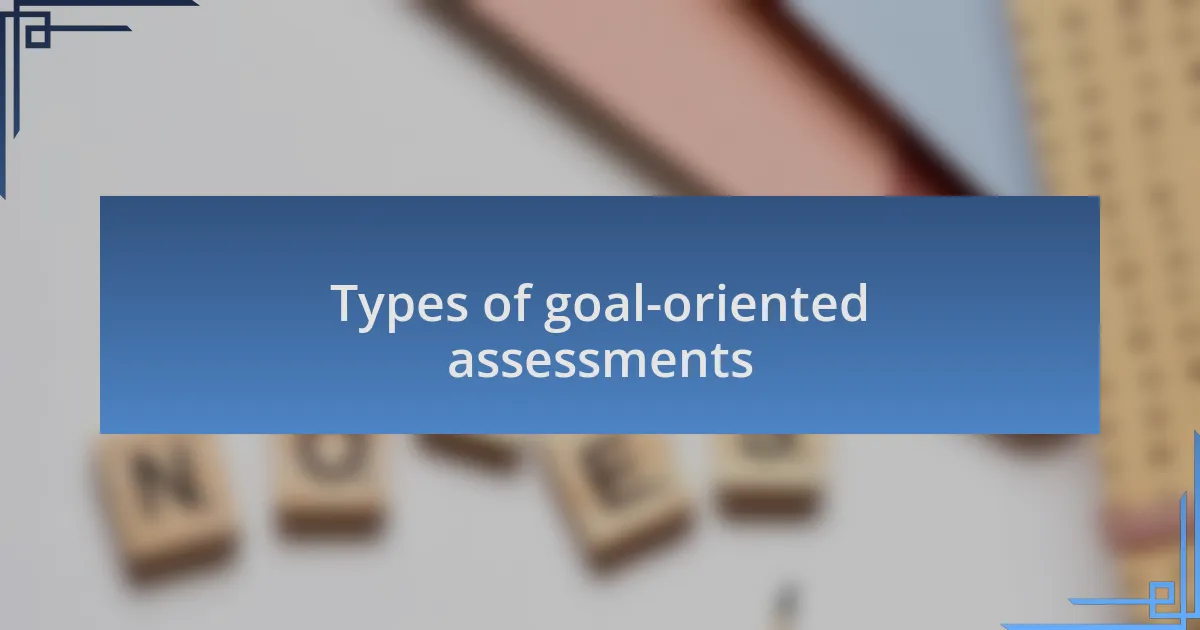
Types of goal-oriented assessments
When it comes to goal-oriented assessments, I’ve encountered various types, each serving a unique purpose in the learning process. For instance, formative assessments are particularly valuable; they are ongoing evaluations that help track student progress during instruction. I remember using quick, informal quizzes in my sessions that revealed how well students were grasping new concepts, allowing me to pivot my teaching approach on the fly. Have you ever had a moment where a simple quiz transformed your lesson plan?
Another type that I find invaluable is summative assessments. These are typically conducted at the end of a learning cycle to measure what has been learned. I once conducted a final project with my students that encapsulated all the skills we had been working on. Seeing their creativity come alive in that project was inspiring, and it provided a clear picture of their growth. Isn’t it rewarding to see the culmination of months of hard work in a tangible form?
Finally, self-assessments play a crucial role in promoting metacognition, encouraging students to reflect on their own learning. I often guide my students to set personal goals and evaluate their progress towards those goals. For example, I had a student who started tracking their reading fluency. Their realization that they were improving through consistent practice was not just uplifting for them but also reaffirmed the power of self-awareness in learning. How do you think self-reflection could enhance a learner’s journey?
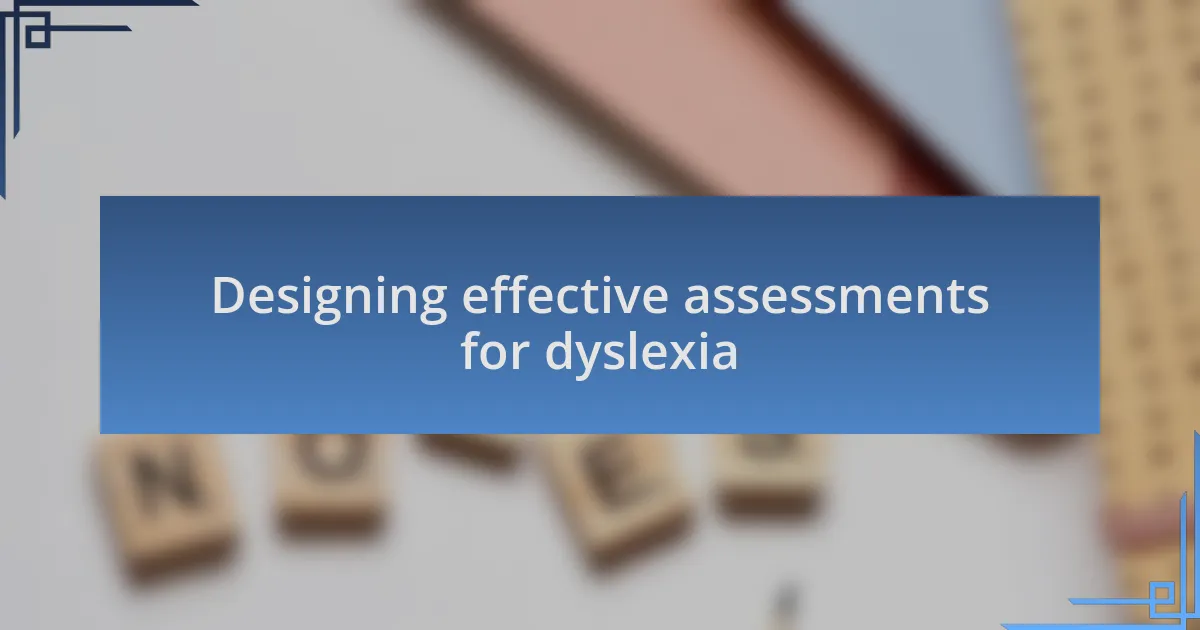
Designing effective assessments for dyslexia
When designing effective assessments for dyslexia, I prioritize clarity and accessibility. I’ve found that using straightforward language and visual aids can make a significant difference for students who struggle with traditional text-based assessments. For instance, I once created an assessment with icons representing different reading strategies; it became a fun and engaging way for students to express their understanding. How might simplifying complex instructions change the assessment experience for learners with dyslexia?
I also emphasize the importance of flexibility in assessment formats. In my practice, I’ve incorporated oral presentations and hands-on projects alongside written tests. One memorable project involved students creating a visual storybook that highlighted their comprehension of narrative structure. The excitement in their eyes as they shared their creations underscored the benefits of allowing diverse expression. Have you ever witnessed a student shine when given a choice in how they demonstrate their learning?
Additionally, continuous feedback is essential for fostering a supportive assessment environment. I often utilize ongoing check-ins, where I give constructive feedback that encourages growth rather than focusing solely on scores. There was a time when a student’s improvement in reading comprehension was masked by their anxiety over grades; once we shifted our focus to their progress, their confidence blossomed. Isn’t it fascinating how a simple change in feedback approach can significantly impact a learner’s mindset?
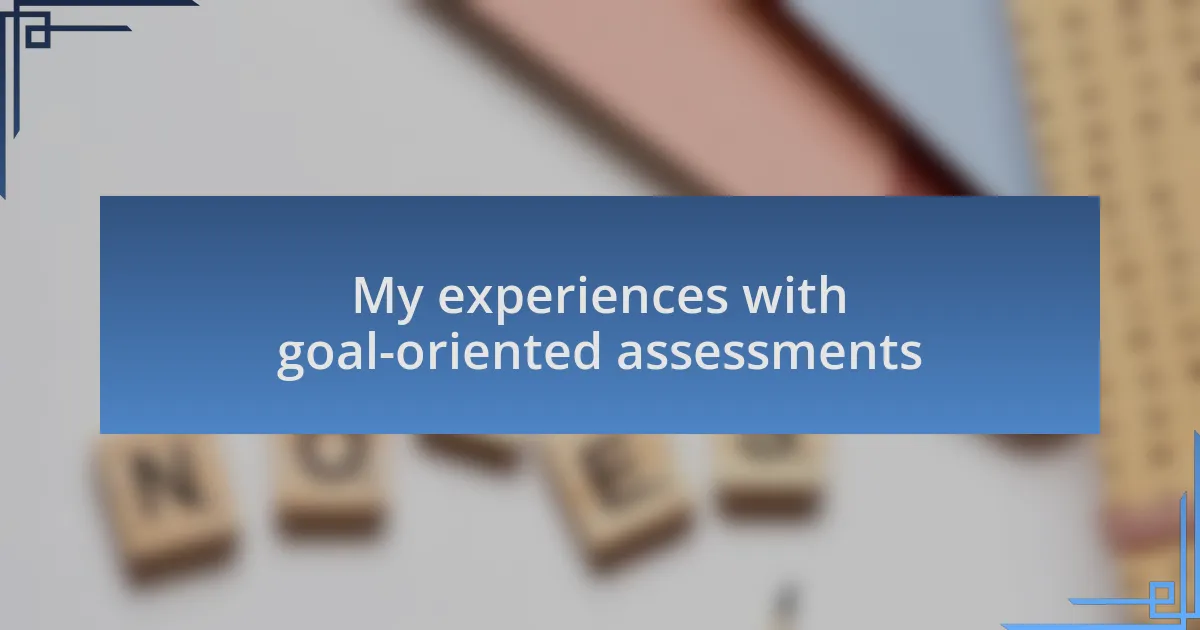
My experiences with goal-oriented assessments
My experiences with goal-oriented assessments have been transformative, both for my students and for myself as an educator. I remember a time when I set specific, achievable goals for a student struggling with reading. We broke down their learning objectives into smaller steps, celebrating every little achievement along the way. Witnessing that student beam with pride after mastering even the simplest tasks was a powerful reminder of the impact that focused goals can have.
In another instance, I incorporated goal-setting sessions with my students at the start of each term. Together, we identified personalized targets, like improving phonemic awareness or expanding vocabulary, which made them feel more invested in their own learning journeys. It was enlightening to see the motivation shift; they became proactive rather than passive participants in their assessments. How often do we consider the role of student agency in assessment success?
It has also struck me how important reflective practices are after assessments. After one assessment cycle, a student who initially resisted goal-oriented assessments came back with reflections noting how the structured goals helped to reduce their anxiety. We discussed their insights, and it was clear that having a clear purpose made all the difference in their engagement and achievement. Don’t you think that reflection should be a crucial part of any assessment process?

Tips for implementing assessments
When implementing assessments, it’s essential to create a welcoming environment where students feel at ease to express themselves. I recall a workshop where we introduced low-stakes assessments. The shift in atmosphere was palpable; students who typically shied away suddenly engaged, sharing their thoughts without fear of judgment. Have you noticed how a relaxed setting can encourage openness and honesty in assessments?
Another effective strategy is to involve students in the assessment design process. I once held a brainstorming session where students outlined what they wanted to demonstrate in their learning. This collaborative effort not only empowered them but also yielded assessments that truly reflected their understanding. The excitement in their voices while suggesting ideas was a reminder of how crucial it is to make assessments relevant and personal.
Don’t forget the power of timely feedback. After an assessment, I made it a point to provide constructive feedback as soon as possible. In one instance, a student expressed how timely insights helped them connect the dots in their learning faster, reinforcing their desire to improve. It makes you think, doesn’t it? How much can instant feedback really enhance a student’s journey toward their goals?